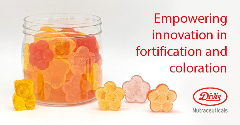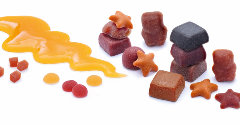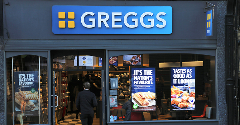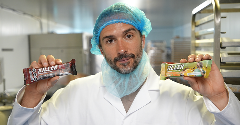News
Brands, retailers, and countries remain divided over Nutri-Score labels
30 Jan 2025Europe's supermarkets and manufacturers are far from aligned over a standarised approach to nutrition labelling. Some welcome the non-mandatory Nutri-Score labels with open arms, while others have “considerable concerns”.
By Francesca Berry

In September, Danone removed the voluntary front-of-pack label from all of its products. An algorithm update reclassified dairy- and plant-based drinks as beverages rather than general food, applying stricter parameters. The result? Some of Danone’s sweetened drinks received a worse score; the maker of Activia, Alpro and Silk was not happy about it.
“Danone’s partial exit adds to the controversy around the scheme and makes a compelling case for EU regulation on this matter,” noted Rabobank experts in a November paper on the issue.
Indeed, Danone has been a big advocate of the scheme (even campaigning for it to be mandatory). But other food and drink manufacturers – including Unilever, Heineken and Arla Foods – have been critical of the approach and are not planning to adopt it. Traditional opponents of the scheme also include Lactalis, Ferrero, Mars, and Kraft, according to a recent Nutri-Score blog, which condemned Danone’s decision. “Their unscientific arguments are trying to mask the real reason for Danone’s decision: their fear of a negative impact on the sale of its products,” the blog reads.
France, Italy, and Germany all have differing opinions of the scheme too, which involves using five different colours to classify food products into five categories: from category A (dark green), indicating higher nutritional quality, to category E (dark orange), indicating lower nutritional quality. Various member states have “considerable concerns” regarding how these scoring systems operate and negatively highlight products like speciality cheeses and meats as being high in fat for instance and therefore appear less attractive, explains Dominic Watkins, head of consumer sector, at law firm DWF. Italy in particular has been a thorn in Nutri-Score’s side.
Carrefour’s suppliers need Nutri-Score labels, or else…
And then there are the supermarkets. Many retailers, including Auchan, Delhaize, Lidl, and Aldi are supportive of Nutri-Score and are using the scheme on their private label ranges.
At Dutch supermarket Albert Heijn, for example, 95% of private label bakery products now feature the label, compared to 13% of branded ones. Across confectionery, chocolate, and biscuits the gap is even more stark: 98% versus 9% on private and branded goods respectively, according to Rabobank.
However, those chains are not (yet) putting the same sort of pressure on suppliers as Carrefour. The French grocery giant is actually demanding suppliers to include Nutri-Score labels on product information displayed online. And those that don’t will be named and shamed on its website.
“Manufacturers who oppose it will lose visibility,” reported Le Parisien. Carrefour CEO Alexandre Bompard wrote to the group's 550 suppliers: "We will now communicate on our website Carrefour.fr and on the Carrefour application the Nutri-Score of your various products sold at Carrefour, unless you formally object, which will be notified to our customers.”
So, is there actually a battle brewing on the shelves of Europe’s supermarkets between brands and retailers?
“That’s the question,” Julia Buech, senior analyst of consumer foods at Rabobank, tells Ingredients Network. “It seems like a battle, and retailers can be quite powerful these days when it comes to driving health and/or sustainability-related initiatives. It will be interesting to see how Carrefour’s approach plays out,” she adds.
Her paper, with Rabobank data scientist Hosang Wu, notes that the recent algorithm update results in many products suddenly scoring lower without changes in the formulation. However, a two-year transition period means the full impact of the changes will not be visible all at once, and the deterioration of the scores may go well into 2026.
It’s not just dairy- and plant-based products that are impacted. Scores in bakery, meat/fish, and plant-based products could all see significant changes. On social media there have been posts about cases of Nutri-Score’s being different on pack and on apps like Open Food Facts. This might reflect the updated score methodology, explains Sarah Blanchard, former head of corporate responsibility for Metro, the large wholesaler, and now head of ESG at Prof. Consulting. This illustrates how fast standards and technology are changing, she adds: “It could be risky for brands who are still marketing the ‘unhealthy’ version, even if there is a phase-in period for the new score to be reflected on packaging.”
Other brands will certainly be closely watching the backlash from Danone’s move. There are reputational risks from such a U-turn. Campaigners said the company was putting profits before public health. “Danone’s U-turn on the Nutri-Score ignores consumers' desire for clear nutritional information on packaging,” says Suzy Sumner, head of the Brussels office for campaign group Foodwatch.
If other brands follow suit, efforts to introduce mandatory requirements could accelerate. “There are many who are concerned about how Nutri-Score calculates results and therefore expect this battle to continue,” says DWF’s Watkins. However, there is likely only one winner in all this, he adds, and that’s the EU because it’s “really the only one that can legislate without fear of consequences. The EU can determine one FOP [front-of-pack] label and has come close to adopting Nutri-Score a number of times.”
Consumers want clarity on food labels but don’t have it (yet)
In December, the European Court of Auditors (ECA) warned that food labels are confusing consumers and misleading them with false claims. A voluntary approach provides companies with wriggle room and creative license, and yet Olivér Várhelyi, the health commissioner, doesn’t appear keen on new rules.
The ECA’s research suggests otherwise: the auditors called for a harmonised approach and for the European Commission to up its game to help consumers make better-informed decisions. “The Commission needs to either propose Nutri-Score as the harmonised and mandatory label across the EU or clear the way and enable member states to introduce a mandatory Nutri-Score on the national level”, says Sumner at Foodwatch.
Finding agreement on the adoption of a front-of-pack nutrition label has turned out to be much harder than it was anticipated years ago when it first became part of the EU’s Farm to Fork strategy, though. A common approach makes sense to all parties in principle, says Buech at Rabobank, but in practice the controversy continues. A steady stream of stories criticising the approach for oversimplifying (and in some cases, misrepresenting) the nutritional quality of products, which is the trade-off for being easily understood.
The divergence in approaches to labelling schemes among retailers and manufacturers highlights a critical challenge in the food system: the lack of a standardised framework for measuring and reporting the healthiness of food products (let alone the environmental impact, which is proving even harder to harmonise).
While some industry players are adopting recognised nutrient profiling models like Nutri-Score and their corresponding front-of-pack labels to define and signify health, others remain inconsistent in their practices, creating confusion for both consumers and investors. “Front-of-pack nutrition labels are a policy mechanism to hold industry accountable, encouraging healthier product development and reformulation,” explains Ali Morpeth, a registered public health nutritionist.
Nutri-Score is here to stay
Indeed, by benchmarking the nutritional profile of products, the labels can help incentivise manufacturers to improve their offerings to meet better standards, and poor health scores can harm reputation and market share. Mandatory labels provide transparency to investors and policymakers, enabling more robust monitoring of industry progress toward public health goals.
As the battle continues between brands and supermarkets one thing is for sure, says Blanchard: “Nutri-Score isn’t going away and while it has its faults it does one thing well – it highlights the difference between similar products in the same category.”
Related news

How younger consumers are redefining ingredient choices and rejecting brand loyalty
18 Nov 2025
Gen Z and millennial consumers’ preferences for transparency, functionality, and purpose are “redefining the very nature of consumption itself”, says SPINS.
Read more
Hybrid formats and flexible positioning to disrupt category norms in 2026
17 Nov 2025
Trend forecasters expect food and drink to move more fluidly across occasions, functions, and formats as consumers seek versatility, novelty, and convenience.
Read more
Empowering innovation in fortification and colouration
13 Nov 2025
Divi’s Nutraceuticals offers a large portfolio of innovative, high-quality ingredients for foods, beverages, and supplements, with bespoke solutions and expert support for product success.
Read more
From fruit to functional solutions: Meet Paradise Fruits at Fi Europe in Paris
13 Nov 2025
Paradise Fruits Solutions and Paradise Fruits Health will showcase their combined expertise in delivering innovative, fruit-based solutions to the food and beverage industry at the upcoming Fi Europe trade show (2-4 December 2025, Paris).
Read more
New UPF standard hoped to offer consumers ‘coherence and clarity’
10 Nov 2025
Ingredients companies are being urged to enter “a new era of partnership and innovation” following the launch of the industry’s first non-UPF verification scheme.
Read more
Cottage cheese makes a comeback as consumers call for cleaner labels
6 Nov 2025
From ice cream to dips and ready meals, cottage cheese is experiencing a renaissance as a high-protein, clean ingredient for health-conscious consumers.
Read more
Ingredient quantities mislabelled on popular protein bars, independent tests show
5 Nov 2025
Some popular protein bars contain more fat, carbs, and/or sugars than claimed on their labels, independent nutrition testing reveals.
Read more
Does promoting protein content push up plant-based sales?
27 Oct 2025
Promoting the protein content of meat-free products is a more effective sales strategy than adding carbon labels, a study of UK bakery chain Greggs suggests.
Read more
Agrigum Redefined FIBER
27 Oct 2025
Agrigum has transformed gum acacia into a natural, science-backed fibre that supports gut health, sustainability, and innovation across global food and nutrition applications.
Read more
Will Wicks’ Killer Bar harm the protein bar category?
23 Oct 2025
Joe Wicks’ deliberately dangerous protein bar is fuelling anti-UPF sentiment – but there are concerns that his messaging is misguided and could have unintended consequences.
Read more